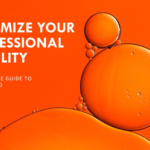Want to boost your visibility on LinkedIn in 2024? Here’s your ultimate SEO guide!
In today’s digital-first professional landscape, being discoverable on LinkedIn isn’t just an advantage — it’s a necessity. As someone who’s spent over a decade optimizing LinkedIn profiles and content for Fortune 500 executives and industry leaders, I’ve witnessed firsthand how LinkedIn’s algorithm has evolved, and more importantly, how to stay ahead of it.
In the modern job market, LinkedIn has evolved beyond a networking platform — it’s now a vital tool for career visibility, lead generation, and personal branding. For professionals looking to make the most of LinkedIn, understanding LinkedIn SEO is crucial. This guide explores what LinkedIn SEO entails, why it matters, and how you can strategically enhance your profile to maximize your professional visibility in 2024.
Why LinkedIn SEO Matters More Than Ever
The professional world has fundamentally shifted. With over 950 million members on LinkedIn, standing out requires more than just a complete profile. It demands a strategic approach to SEO that aligns with LinkedIn’s unique algorithm and user behavior patterns.
Consider this: 77% of recruiters regularly use LinkedIn to source candidates, while 40% of B2B marketers cite LinkedIn as their most effective channel for high-quality lead generation. The question isn’t whether you should optimize your LinkedIn presence — it’s how to do it effectively.
LinkedIn SEO (Search Engine Optimization) refers to optimizing your LinkedIn profile so it appears in search results within LinkedIn and on external search engines like Google. A high-ranking profile increases your chances of being discovered by recruiters, clients, or collaborators. With LinkedIn’s algorithm constantly evolving, staying on top of SEO trends can set you apart from competitors in your field.
The Three Pillars of LinkedIn SEO
1. Profile Optimization
- Strategic keyword placement in your headline, about section, and experience descriptions
- Custom URL optimization
- Rich media integration for higher engagement
- Skills endorsements and recommendations alignment
Optimizing Profile Basics: Name, Headline, and Summary
- Your Name: While this may sound obvious, using only your name (and not titles or symbols) helps LinkedIn’s algorithm clearly identify and rank your profile.
- Headline: Your LinkedIn headline is prime SEO real estate. Use keywords relevant to your industry and role to make your profile more discoverable.
- Summary/About Section: Incorporate keywords naturally within your summary to help LinkedIn’s algorithm understand your professional expertise. Think of this section as a mini-blog post where you highlight your skills, experience, and what makes you unique.
2. Content Strategy
- Post timing based on audience activity
- Content format variation (text, polls, documents, videos)
- Strategic hashtag usage (3–5 relevant hashtags per post)
- Engagement-driven content structures
Crafting Keyword-Rich Experience Descriptions
When detailing your work experience, be sure to integrate job-specific keywords. For example, instead of saying “Managed social media,” try “Led social media strategy development and execution for B2B and B2C channels.” The goal is to add context to your roles with industry-relevant terms, enhancing both clarity and SEO.
3. Network Enhancement
- Strategic connection building
- Group participation and thought leadership
- Comment engagement patterns
- Content sharing strategies
4. Skills and Endorsements: Essential SEO Boosters
- Skills Section: List up to 50 skills relevant to your profession. LinkedIn’s algorithm places emphasis on the top 3, so choose those carefully.
- Endorsements: Endorsements from others reinforce your skills and show the LinkedIn algorithm that these are genuine strengths of yours, thus increasing your visibility.
Advanced LinkedIn SEO Techniques for 2024
The landscape has evolved, and so must our strategies. Here are the most effective techniques I’ve validated through extensive testing:
- Algorithm-Friendly Content Structures
- Open with a hook in the first 2–3 lines
- Use space breaks between paragraphs
- Include a clear call-to-action
- Leverage LinkedIn’s native content features
Keyword Integration Strategy
- Primary keyword in headline
- Secondary keywords in experience descriptions
- Tertiary keywords in skills and endorsements
- Natural language processing optimization
Engagement Optimization
- Post when your audience is most active
- Respond to comments within the first hour
- Use engagement-triggering questions
- Create content series for consistent follower
The Power of LinkedIn’s Search Algorithm
Understanding how LinkedIn’s algorithm works is crucial. Unlike traditional search engines, LinkedIn’s algorithm weighs social proof heavily. Here’s what matters most:
- Profile completeness score
- Connection relevance
- Content engagement rates
- Activity consistency
- Endorsement quality
Implementation Roadmap
- Week 1: Profile Optimization
- Week 2–3: Content Strategy Development
- Week 4: Network Building
- Month 2: Engagement Pattern Establishment
- Month 3: Results Analysis and Strategy Refinement
Measuring Success
Track these key metrics to gauge your LinkedIn SEO success:
- Profile view increases
- Search appearance growth
- Content engagement rates
- Connection request quality
- Message response rates
5. Engagement and Activity as an SEO Driver
Your LinkedIn activity, such as posts, comments, and shares, plays a significant role in SEO. Regular activity signals to LinkedIn that your profile is active and worth promoting in search results. To leverage this, engage with content related to your industry, share updates, and post articles.
6. Networking Tactics that Boost Profile Visibility
Expanding your connections expands your reach. LinkedIn favors profiles with larger networks, so connect with people from your industry and regularly engage with your connections’ content to keep your profile active.
7. External SEO: Making Your Profile Google-Friendly
An often-overlooked factor is LinkedIn’s ability to appear in Google search results. To improve external SEO:
- Make your profile public.
- Use keywords naturally in your headline, experience, and summary sections.
- Customize your LinkedIn URL to include your full name for easier searchability on Google.
8. Optimizing for LinkedIn’s Search Filters
Recruiters often use LinkedIn’s filters to find candidates. To make sure you’re appearing in the right search results:
- Add your industry.
- Use relevant hashtags in posts.
- Specify your location and job preferences if you’re looking for opportunities.
9. Leverage LinkedIn Features: Creator Mode, Articles, and Media
- Creator Mode: If you post regularly, turning on Creator Mode helps position you as an authority in your field.
- Publishing Articles and Adding Media: LinkedIn articles and media can enrich your profile, giving it depth and demonstrating your knowledge, which strengthens SEO.
10. Measure and Adjust with LinkedIn Analytics
LinkedIn analytics allow you to track profile views, search appearances, and post engagements. Use this data to refine your keywords, content approach, and engagement strategy.
Conclusion With LinkedIn becoming an increasingly competitive space, optimizing your profile for SEO isn’t just a benefit — it’s essential. By implementing these strategies, you can stay ahead in 2024 and ensure that the right people find you at the right time.Looking Ahead
As LinkedIn continues to evolve, staying ahead requires constant adaptation. Focus on creating value-driven content that serves your audience while maintaining SEO best practices. Remember, the goal isn’t just to be found — it’s to be remembered and respected in your professional community.
Your Next Steps
- Audit your current LinkedIn presence
- Implement the strategies outlined above
- Monitor your metrics
- Adjust based on results
- Stay consistent with your optimization efforts
What LinkedIn SEO strategies have worked best for you? Share your experiences in the comments below, and let’s learn from each other’s successes and challenges.














